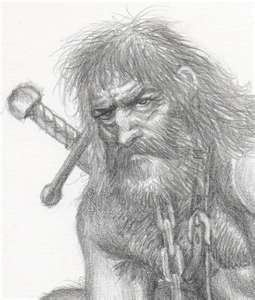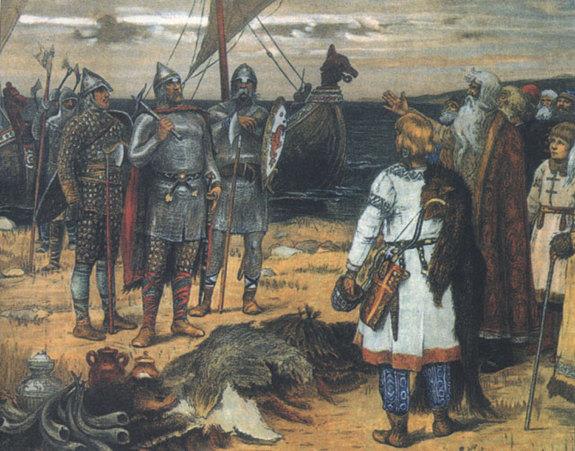




Looking After Your Finds - Reference

Vikings - Facts & Myths
Powered By Sispro1



Courtesy: Ryan Goodrich, LiveScience Contributor Date: 16 May 2013 Time: 06:19 PM ET

Copyright All Rights Reserved by Nigel G Wilcox E-Mail: ngwilcox100@gmail.com
Group Pages
[1]
Check out the Viking Finds
Complimentary Topics
Vikings
The Vikings were a seafaring people from the late eighth to early 11th century who established a name for themselves as traders, explorers and warriors. They discovered the Americas long before Columbus and could be found as far east as the distant reaches of Russia. While these people are often attributed as savages raiding the more civilized nations for treasure and women, the motives and culture of the Viking people are much more diverse. These raiders also facilitated many changes throughout the lands from economics to warfare.
The Viking Age
Many historians commonly associate the term “Viking” to the Scandinavian term Vikings, a word for “pirate.” However, the term is meant to reference oversea expeditions, and was used as a verb by the Scandinavian people for when the men traditionally took time out of their summers to go “a Viking.” While many would believe these expeditions entailed the raiding of monasteries and cities along the coast, many expeditions were actually with the goal of trade and enlisting as foreign mercenaries.
The Viking Age references the earliest recorded raid in the 790s until the Norman Conquest of England in 1066. During this time, the reach of the Scandinavian people extended to all corners of northern Europe, and many other nations found Vikings raiding their coasts. The farthest reported records of Vikings were in Baghdad for the trading of goods like fur, tusks and seal fat.
A Viking raid on the monks of Lindisfarne, a small island located off the northeast coast of England, marked the start of the Viking migration from Scandinavia in 793. This location was a well-known abbey of learning, famous throughout the continent for the knowledgeable monks and its extensive library. During this raid, monks were killed, thrown into the sea or taken as slaves along with many treasures of the church, and the library itself razed. This single event set the stage for how Vikings would be perceived throughout the Viking Age: savage warriors with no respect for religion or appreciation for learning.
In the years that followed the initial raid, coastal villages, monasteries and even cities found themselves besieged by these sea-based foreign intruders. Due to the frequency of sea attacks, many developments were made in developing fortifications in the forms of walled-in harbour’s and sea-facing stone walls, defences that proved to be quite effective at deterring raids.
The reason behind these attacks is a topic of debate among academics, though the reasons often stem from such things as the Christian persecution and forced baptism of pagans to reduced agricultural outputs in the Scandinavian region. Many more documented reasons might have prompted these people to leave their cold and harsh homes to seek out the means to survive elsewhere. Yet, despite how unforgiving their homeland may have been, most Vikings still returned to their homeland at the end of each season with treasure, slaves and goods to survive yet another winter.
Viking myths
Many modern perceptions of Vikings found their origins through Catholic propaganda. Upon the sacking of multiple Christian facilities and the loss of countless relics and treasures, the Catholic ministry sought to dehumanize them. Until Queen Victoria’s rule of Britain, the Vikings were still portrayed as a violent and barbaric people. During the 19th and 20th centuries, perceptions changed to the point where Vikings were glamorized as noble savages with horned helmets, a proud culture and a feared prowess in battle.
With regards to the more popular Viking myths created through these misperceptions, the following are proven to be clearly false according to historical record:
1. Vikings wore horned helmets
Vikings traditionally went bareheaded or wore simple leather and metal-frame helmets with the occasional face guard. The idea behind horned helmets came about from the Viking revival during Victoria’s reign.
2. They were filthy and unkempt
Archaeologists find evidence on a regular basis of combs, spoons and other grooming utensils that indicate the Viking people were very keen on maintaining personal hygiene.
3. They spent all their time raiding and warring
While raiding proved an excellent source of income, many of the Vikings held farms back in their homeland that their wives maintained during Viking season. When the men returned home from a raid, they resumed their normal routine of farming.
4. Vikings were a unified army
Due to the difficult geographic location, the Scandinavian people were very spread out to conserve limited farmland. In addition, the penetration of Christianity caused many great divisions among the people still worshipping the traditional Nordic pantheon, further emphasizing the divided nature of the people.
5. They were large and heavily muscled
Due to the short summer seasons, growing crops was difficult and resources were always scarce. As a result, many of the Scandinavian people were much smaller than commonly depicted due to limited food sources.
While the living conditions in Scandinavian regions were certainly harsh and made a hard people, many Vikings suffered from the scarcity of resources and the people set up their homes over great distances with no real unified leadership. During the Viking Age, the Scandinavian people were able to make a stronger push to the outside worlds and create a reputation for themselves beyond simple barbarism. While some Vikings were driven with the lust for riches, many sought more peaceful economic relationships with the surrounding nations.
The Viking Age
Many historians commonly associate the term “Viking” to the Scandinavian term Vikings, a word for “pirate.” However, the term is meant to reference oversea expeditions, and was used as a verb by the Scandinavian people for when the men traditionally took time out of their summers to go “a Viking.” While many would believe these expeditions entailed the raiding of monasteries and cities along the coast, many expeditions were actually with the goal of trade and enlisting as foreign mercenaries.
The Viking Age references the earliest recorded raid in the 790s until the Norman Conquest of England in 1066. During this time, the reach of the Scandinavian people extended to all corners of northern Europe, and many other nations found Vikings raiding their coasts. The farthest reported records of Vikings were in Baghdad for the trading of goods like fur, tusks and seal fat.
A Viking raid on the monks of Lindisfarne, a small island located off the northeast coast of England, marked the start of the Viking migration from Scandinavia in 793. This location was a well-known abbey of learning, famous throughout the continent for the knowledgeable monks and its extensive library. During this raid, monks were killed, thrown into the sea or taken as slaves along with many treasures of the church, and the library itself razed. This single event set the stage for how Vikings would be perceived throughout the Viking Age: savage warriors with no respect for religion or appreciation for learning.
In the years that followed the initial raid, coastal villages, monasteries and even cities found themselves besieged by these sea-based foreign intruders. Due to the frequency of sea attacks, many developments were made in developing fortifications in the forms of walled-in harbour’s and sea-facing stone walls, defences that proved to be quite effective at deterring raids.
The reason behind these attacks is a topic of debate among academics, though the reasons often stem from such things as the Christian persecution and forced baptism of pagans to reduced agricultural outputs in the Scandinavian region. Many more documented reasons might have prompted these people to leave their cold and harsh homes to seek out the means to survive elsewhere. Yet, despite how unforgiving their homeland may have been, most Vikings still returned to their homeland at the end of each season with treasure, slaves and goods to survive yet another winter.
Viking myths
Many modern perceptions of Vikings found their origins through Catholic propaganda. Upon the sacking of multiple Christian facilities and the loss of countless relics and treasures, the Catholic ministry sought to dehumanize them. Until Queen Victoria’s rule of Britain, the Vikings were still portrayed as a violent and barbaric people. During the 19th and 20th centuries, perceptions changed to the point where Vikings were glamorized as noble savages with horned helmets, a proud culture and a feared prowess in battle.
With regards to the more popular Viking myths created through these misperceptions, the following are proven to be clearly false according to historical record:
1. Vikings wore horned helmets
Vikings traditionally went bareheaded or wore simple leather and metal-frame helmets with the occasional face guard. The idea behind horned helmets came about from the Viking revival during Victoria’s reign.
2. They were filthy and unkempt
Archaeologists find evidence on a regular basis of combs, spoons and other grooming utensils that indicate the Viking people were very keen on maintaining personal hygiene.
3. They spent all their time raiding and warring
While raiding proved an excellent source of income, many of the Vikings held farms back in their homeland that their wives maintained during Viking season. When the men returned home from a raid, they resumed their normal routine of farming.
4. Vikings were a unified army
Due to the difficult geographic location, the Scandinavian people were very spread out to conserve limited farmland. In addition, the penetration of Christianity caused many great divisions among the people still worshipping the traditional Nordic pantheon, further emphasizing the divided nature of the people.
5. They were large and heavily muscled
Due to the short summer seasons, growing crops was difficult and resources were always scarce. As a result, many of the Scandinavian people were much smaller than commonly depicted due to limited food sources.
While the living conditions in Scandinavian regions were certainly harsh and made a hard people, many Vikings suffered from the scarcity of resources and the people set up their homes over great distances with no real unified leadership. During the Viking Age, the Scandinavian people were able to make a stronger push to the outside worlds and create a reputation for themselves beyond simple barbarism. While some Vikings were driven with the lust for riches, many sought more peaceful economic relationships with the surrounding nations.
Designed by Nigel G Wilcox
The Paragon Of Metal Detecting
& Archaeology
& Archaeology
Pages
Member NCMD
Reference Menu
[2]
Viking Timelines Menu




















